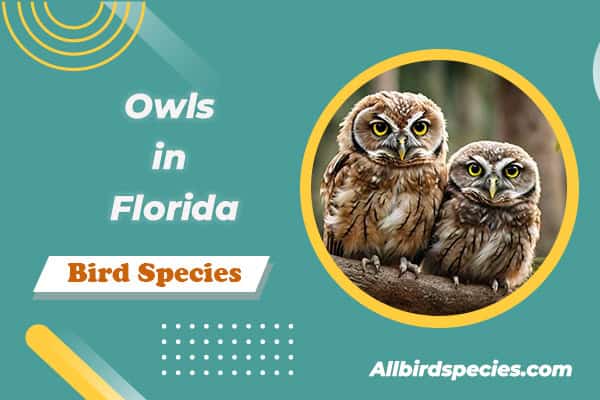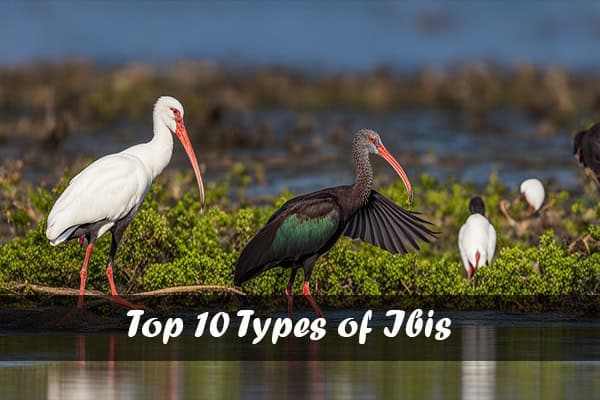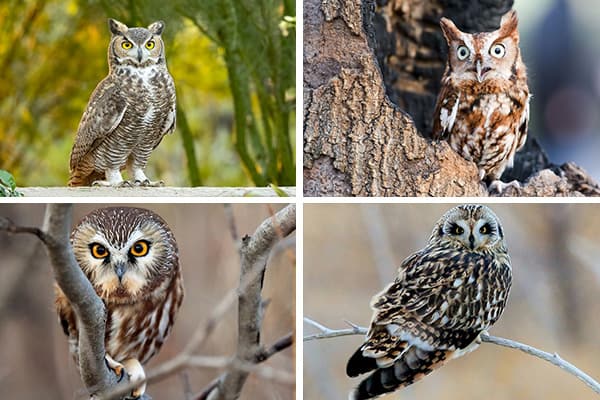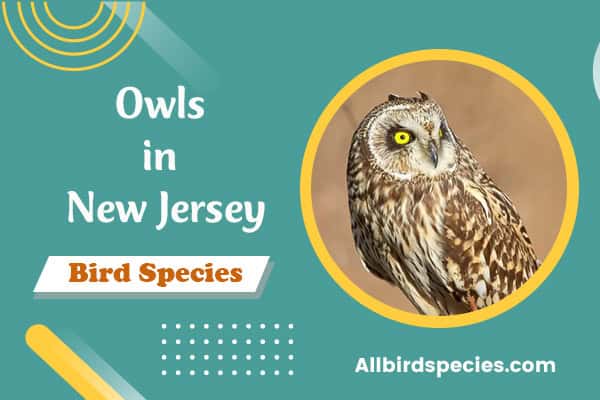8 Types of Owls in Virginia (With Pictures)
Did you know Virginia has eight different owls? Each one has its own unique traits and ways of surviving. These birds are not just interesting to watch; they help keep our ecosystems balanced. Let’s dive into the world of Virginia’s owls, and learn about their types, where they live, and what they do.
If you love birdwatching or just want to know more about Virginia’s wildlife, you’ll find this fascinating. Discover the amazing variety of owls in our state.
What do Owls Sound Like?
Owls make a variety of sounds, but the most common one is a hoot. This deep, low sound is often associated with these birds. However, owls can also screech, whistle, and make clicking noises. The type of sound an owl makes can depend on its species and what it’s trying to communicate, like warning off predators or attracting a mate. Each owl has its unique voice, so they all sound a bit different.
1. Great Horned Owl
- Scientific name – Bubo virginianus
- Lifespan – 28 (maximum recorded)
- Size – 17 to 25 in
- Weight – 2.6 to 3.5 lb
- Wingspan – 3 to 5 ft
The Great Horned Owl, known as Bubo virginianus, is a well-known bird in North America. It has unique traits that grab the interest of bird lovers and others. We’ll look into its looks, where it lives, sounds, and how it hunts to show its grandeur.
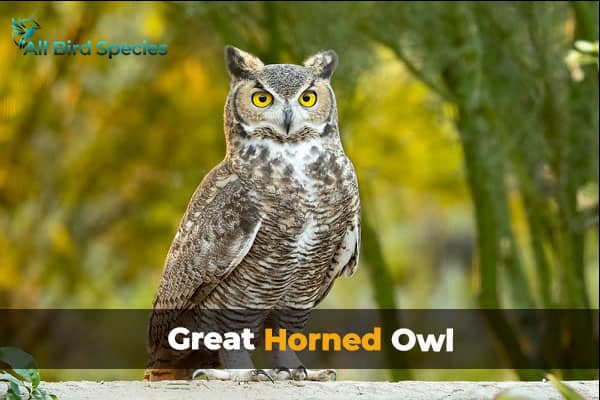
Physical Characteristics
The Great Horned Owl is known for its tufted horns, which look like ears. It’s between 17 to 25 inches long and has a wingspan of 3 to 5 feet. Its feathers are grayish-brown and have brown bars under them, helping it hide in the wild. These features help it hunt well in different places.
Habitat and Range
The Great Horned Owl lives across much of North America, including Virginia. It likes wooded areas and farmland for its home. It often nests in tree hollows or buildings. These owls are very protective of their territory and can stay in one place for a long time.
Vocalizations and Hunting Behavior
The Great Horned Owl makes deep, low hoots that are easy to recognize. These sounds help it mark its territory and talk to other owls. It’s a night hunter that eats over 200 types of mammals and birds. It’s very skilled at hunting in forests and open fields.
2. Barred Owl
- Scientific name – Strix varia
- Lifespan – 24 years (oldest recorded)
- Size – 16 – 25 in
- Weight – 17 – 35 oz
- Wingspan – 38 – 49 in
The Barred Owl, known as Strix varia, is a bird that catches our eye with its unique look and interesting ways. It’s also called the Hoot Owl because of its special call. This owl has traits that make it stand out in the owl world. Let’s look at what makes them special and where they like to live.

Appearance and Identification Marks
The Barred Owl has a round head and a pale face disk, with dark eyes that seem curious. Its feathers are brown with cream-white bars, giving it a majestic look that helps it blend in. Adults are 16 to 25 inches long, making them a big owl in Virginia. Here are the main things that help identify them:
| Characteristic | Description |
|---|---|
| Size | 16 to 25 inches in length |
| Facial Disk | Pale with dark eyes |
| Feather Pattern | Cream-white barring on brown |
| Wingspan | 39 to 43 inches |
Preferred Habitats
Barred Owls live in mature forests in Virginia, especially those with lots of old trees. These trees are perfect for nesting. These owls can live in many places, not just deep in the woods. They also do well in parks and near forest edges, where they can hunt easily. Knowing where they live helps us understand their importance in nature.
3. Barn Owl
- Scientific name – Tyto alba
- Lifespan – 25 years (captivity: maximum recorded)
- Size – 13 to 15 in
- Weight – 8 to 25 oz
- Wingspan – 31 to 37 in
The Barn Owl, known as Tyto alba, captures our hearts with its mysterious look and special traits. It’s famous for its ghostly look. This owl is unique because of its distinct features. Let’s look at what makes the Barn Owl so special and its amazing hunting skills and diet.

Distinctive Features
The Barn Owl has features that make it look hauntingly beautiful. It’s about 13 to 15 inches long and has a heart-shaped face and big eyes. These eyes help it see in the dark. Its white belly and tawny and gray back make it stand out at night. These traits make it a top hunter in the dark.
Diet and Hunting Methods
The Barn Owl’s eating habits and hunting ways are really interesting. Also, It loves to eat small mammals, especially voles. It flies quietly over fields and grasslands at night, using its great hearing to find prey. It can catch hard-to-find animals without seeing them. This shows how important the Barn Owl is for the environment.
Owls in other Regions:
4. Eastern Screech Owl
- Scientific name – Megascops asio
- Lifespan – 14 years (oldest recorded)
- Size – 6.5 – 10 in
- Weight – 4 – 8 oz
- Wingspan – 18 – 24 in
The Eastern Screech Owl, known as Megascops asio, is a small but lively bird. It often goes unnoticed, unlike its bigger cousins. Learning about their unique traits helps us appreciate these common owls more.

Color Morphs and Size
The Eastern Screech Owl shows off its size and color variety. They range from 6.5 to 10 inches long and come in gray and rusty-brown colors. These colors help them hide from predators, making them good at surviving in different places.
Adaptation to Urban Areas
These owls are amazing at living in cities and suburbs. They make their homes in places like parks and gardens. Their ability to live with humans shows how adaptable they are. At dusk and dawn, you can hear their sounds, adding to the city’s soundscape. They’re one of the most common owls in Virginia, showing how well they’ve adapted.
5. Short-Eared Owl
- Scientific name – Asio flammeus
- Lifespan – 4 years
- Size – 13 to 17 in
- Weight – 7.3 to 16.8 oz
- Wingspan – 33 to 40 in
The Short-Eared Owl, known as Asio flammeus, is unique among raptors for its daytime hunting. It thrives in grasslands, where its special features make it a top predator.
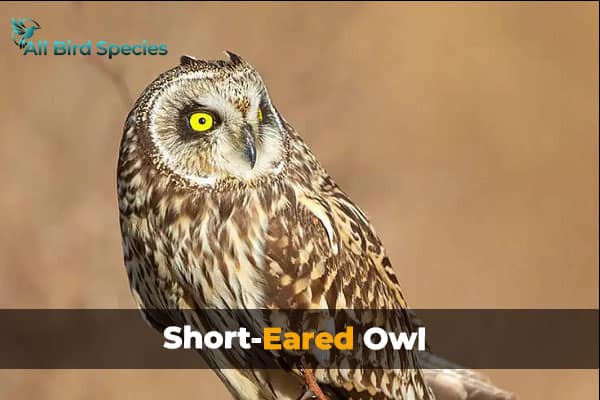
This owl is active during the day. It hunts at dawn and dusk when light is low. This strategy helps it see its prey better.
The Short-Eared Owl’s hunting is quite interesting. It uses its sharp eyesight to find small mammals, a big part of its diet. We see them flying low, looking for movement on the ground.
These owls love open areas in Virginia. They hunt in grasslands, marshes, and fields. These places give them lots of food and let them use their hunting skills well.
Learning about the Short-Eared Owl shows us how adaptable and skilled it is during the day in its home habitat.
Rare Owls in Virginia: Challenges and Conservation
Virginia is home to many owl species, some of which are rare and face big challenges. The Northern Saw-whet Owl and the Long-eared Owl are two examples. These owls have fewer friends because of lost homes due to cities and farms growing.
To help these birds, conservation efforts are happening. We can help by supporting nature and joining local conservation groups. These groups work to save the places these owls need for living and hunting.
It’s important to tell others why we need to save Virginia’s wildlife. By keeping our ecosystems safe, we help rare owls and other animals too. Our efforts to protect their homes are key to keeping our nature rich and diverse.
Owls in Virginia: A Cultural Perspective
Owls are deeply meaningful in many cultures. In Virginia, they symbolize wisdom and mystery. Their night habits and sounds inspire stories that show our bond with nature.
Owls are seen as guardians of the night. They guide souls and watch over nature. In Virginia’s history, owls appear at key moments, as signs or symbols of change. These stories connect us deeply with the environment.
Owls symbolize knowledge and insight across cultures. In Virginia, they are seen as having ancient wisdom. Their influence is seen in art, literature, and local myths, making them fascinating to explore.
Understanding owls’ cultural importance in Virginia shows their impact on us. Their stories and traditions show the beauty of these birds and our connection with nature. This bond keeps evolving, showing our changing views on wildlife and the environment.
where to see owls in Virginia
Owl spotting can be both challenging and rewarding. It’s like entering the world of nocturnal raptors. These birds are active at night, adding mystery to our wildlife adventures.
Learning owl calls is key. It helps us find where owls hang out. Each owl has its call, so it is vital to spot these sounds.
Owls are experts at hiding. They blend into their surroundings perfectly. By paying attention to their hiding spots, we might find where they rest.
- Be quiet and patient during wildlife observation.
- Use binoculars for a closer view of potential roosting sites.
- Engage in early morning or late evening outings.
- Join local birdwatching groups for shared experiences and insights.
Using these tips can make spotting owls more exciting. We can see these amazing birds in the wild with time and effort. Happy birdwatching!
Wrapping Up…
In Va, owls are not just beautiful birds; they play a key role in our ecosystems. They live in many different places, showing the variety of birds we’re lucky to see. From the big Great Horned Owl to the small Eastern Screech Owl, each one helps keep nature in balance.
Learning about owls helps us value nature more. Each owl shows us how important the connections in our environment are. We must work to keep these relationships safe. By understanding their lives and problems, we get better at protecting them.



